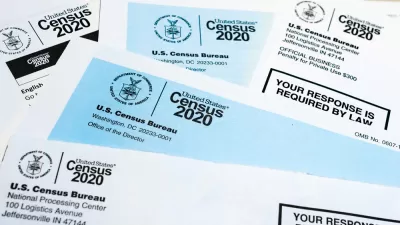The NYT editorializes on the just-released April 2010-July 2011 census data that shows a notable slow-down in exurban growth as urban growth increased. Pointing to the problems that accompanied America's embrace of sprawl, they welcome the change.
The editors note that despite the upturn in the economy, the sprawling growth patterns have not returned.
The demographic data showing "peak exurban growth" in 2006 mentioned below correlates with "peak oil consumption" in 2007 and "peak vehicle miles driven".
"For generations, Americans have migrated ever outward from city centers, pulled by affordable housing to places where long commutes were possible because of cheap gasoline. The costs of such migration - in traffic congestion, environmental degradation and increasing addiction to fossil fuels - were played down or ignored.
As a demographer, William Frey of the Brookings Institution, told The Times recently, exurbs were once the "cutting edge" of growth, but no more. "That growth has really come to a standstill," he said, "and is maybe being given up for dead at this point." His analysis of data found that the country's outer suburbs grew by only 0.4 percent in the fiscal year ended in July, down from 1 percent the same period before. It peaked, in 2006, above 2 percent.
The Census Bureau also recently reported that America's urban population increased by 12.1 percent from 2000 to 2010, faster than the nation's overall growth rate of 9.7 percent. The exurban tide may be receding."
FULL STORY: Pulling Back From the Exurbs

Alabama: Trump Terminates Settlements for Black Communities Harmed By Raw Sewage
Trump deemed the landmark civil rights agreement “illegal DEI and environmental justice policy.”

Study: Maui’s Plan to Convert Vacation Rentals to Long-Term Housing Could Cause Nearly $1 Billion Economic Loss
The plan would reduce visitor accommodation by 25% resulting in 1,900 jobs lost.

Why Should We Subsidize Public Transportation?
Many public transit agencies face financial stress due to rising costs, declining fare revenue, and declining subsidies. Transit advocates must provide a strong business case for increasing public transit funding.

Paris Bike Boom Leads to Steep Drop in Air Pollution
The French city’s air quality has improved dramatically in the past 20 years, coinciding with a growth in cycling.

Why Housing Costs More to Build in California Than in Texas
Hard costs like labor and materials combined with ‘soft’ costs such as permitting make building in the San Francisco Bay Area almost three times as costly as in Texas cities.

San Diego County Sees a Rise in Urban Coyotes
San Diego County experiences a rise in urban coyotes, as sightings become prevalent throughout its urban neighbourhoods and surrounding areas.
Urban Design for Planners 1: Software Tools
This six-course series explores essential urban design concepts using open source software and equips planners with the tools they need to participate fully in the urban design process.
Planning for Universal Design
Learn the tools for implementing Universal Design in planning regulations.
Smith Gee Studio
Alamo Area Metropolitan Planning Organization
City of Santa Clarita
Institute for Housing and Urban Development Studies (IHS)
City of Grandview
Harvard GSD Executive Education
Toledo-Lucas County Plan Commissions
Salt Lake City
NYU Wagner Graduate School of Public Service





























